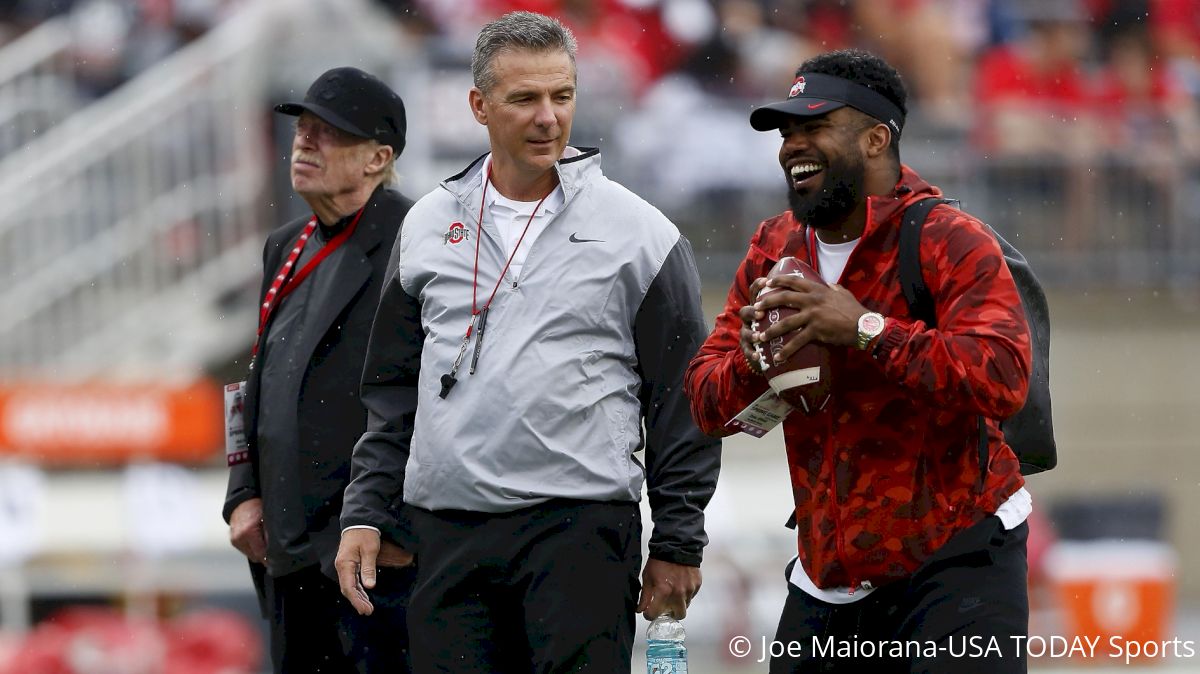Distribution Of Talent Highlights College Football's Lack Of Parity
Distribution Of Talent Highlights College Football's Lack Of Parity
Poachers still poached, the blue bloods still dominated, and college football's lack of parity has never been greater.

By now, you’re likely very well aware that Georgia’s 2018 signing class was kind of a big deal. The Bulldogs locked up a record seven five-star prospects as part of an all-time group, the quality and quantity of which led most to completely ignore what everyone else was able to do.
Ohio State, for example, put together the sixth best class of all time. Clemson (ever heard of ‘em?) just signed its best class of all time, including four of the country’s top 10 prospects. Penn State also signed its best class, cracking the top 10 for just the second time in school history.
In all, 10 schools not named Georgia signed classes that, for all intents and purposes, can be considered their best ever. That list that doesn’t include Texas, which jumped from the 25th-ranked class in 2017 (217.76 points) to No. 3 in 2018 (300.6), nor does it include Southern Cal, which closed spectacularly on National Signing Day, nor Alabama, whose “disappointing” ’18 class only included the top-ranked defensive end and cornerback in the country.
In short, the already very rich got richer.
Penn State sits at No. 5 in the nation as Signing Day wraps up. It's the best finish in school history, beating out the Class of 2006, which finished sixth. https://t.co/BDCPqcM9nh pic.twitter.com/H5B3G6S3E2
— Blue-White Illustrated (@BWIonRivals) February 8, 2018
Cincinnati had the top Group of Five class at No. 47, which, while it may not seem like much, was the Bearcats’ best class of all time and is a pretty lofty ranking for a non-Power Five program. Boise State checked in at No. 56, which is basically its mean for the past decade or so.
And, of course, everywhere we look, someone is talking about how the Early Signing Period helped prevent poaching from the Group of Five, but did it really? Sure, if a guy signed with, say, Tulane back in December, that would have subtracted two months of time that LSU had to ultimately make him an offer as a consolation piece.
But there wasn’t a significant run of fringe P5 commits in December.
The bulk of early signatures came from elite prospects who were solid and tired of the process or of three-to-four stars who saw no personal benefit in allowing a P5 school more time to consider its options.
Cincinnati was, by far, the most impressive G5 during the ESP, signing 22 in December, but the Bearcats succeeded because head coach Luke Fickell went on the offensive, flipping wide receive Meechi Harris and, later, running back Tavion Thomas from Kentucky and Oklahoma, respectively.
Cincinnati did the poaching.
Four-stars Leonard Taylor & Tavion Thomas give the #Bearcats two of the best 'Group of 5' additions on #NSD2018 (FREE): https://t.co/v6ib6KEE6X pic.twitter.com/zdC6IakNLu
— BearcatReport.com (@BearcatReport) February 8, 2018
Can an argument be made that the Bearcats picked up ground on, I don’t know, West Virginia? Absolutely. But is that the point? Cincinnatis of the world can already compete with West Virginias of the world. The great divide doesn’t exist between No. 40 and No. 60, it exists between No. 5 and No. 25 — and that divide is only widening.
Take, for example, what UGA head coach Kirby Smart had to say when asked how he was able to assemble his most recent collection of talent:
“One of the things that helped us today was that we knocked a ton of the work out in December,” he said. “We were able to focus our contact attention on the four or five guys who we needed to round out the class.”
One of those players was four-star wide receiver Tommy Bush, who may have otherwise been Baylor-bound.
Georgia got its man, largely, as a result of the fact that the Bulldogs were given a brief recess to evaluate remaining needs. And, when Bush stiff arms Baylor for Georgia, what do you suppose happens with the fringe holdout who collects the P5 offer he was hoping for at the 11th hour?
Four of the five highest-rated classes in history (per 247Sports average prospect rating) happened this year. Only 10 teams signed a five-star prospect — the most narrow distribution of wealth ever recorded.
But for very rare occasions (see: Oliver, Ed), G5 schools aren’t touching a top 300 prospect. And, by contrast, if Florida State wants to go get a Keyshawn Helton — or, for that matter, if Arkansas wants to go get a Mike Woods — well, then, they’re going to.
Developing parity as a result of the ESP is make believe. Prospects are still going where they always go — and the gap between contender and pretender is growing.